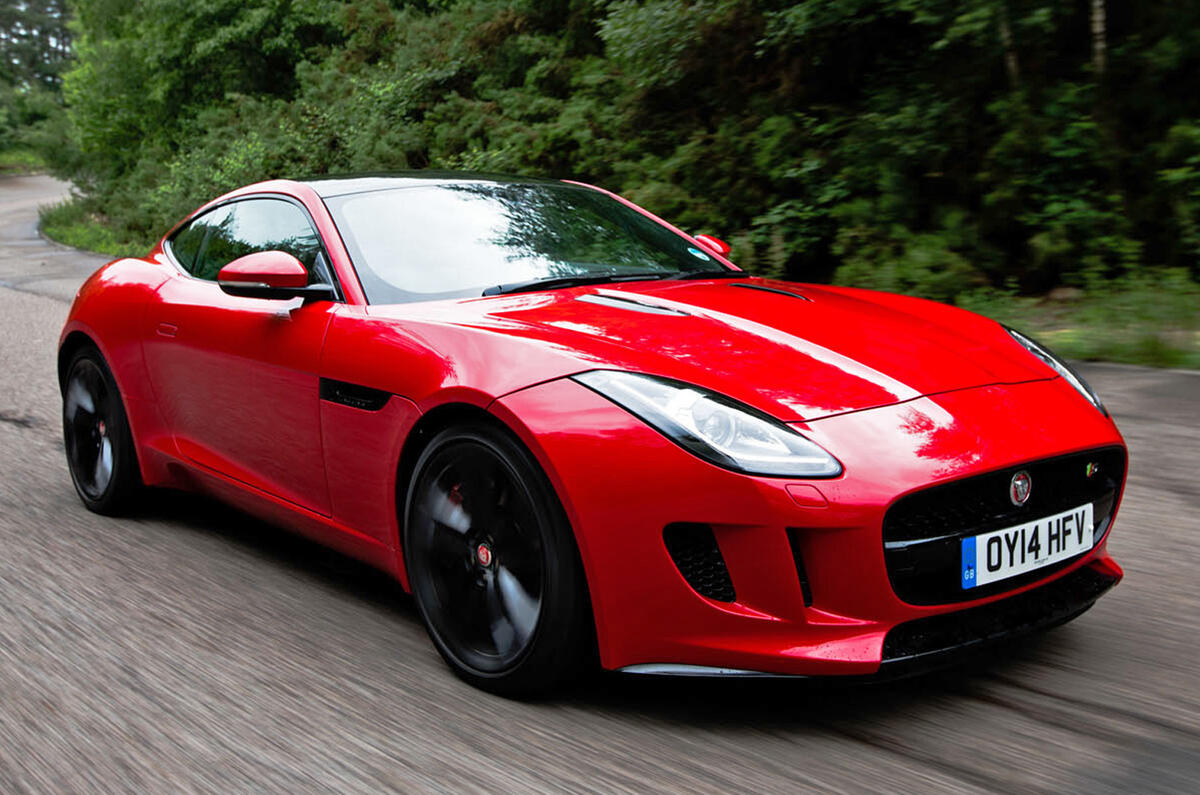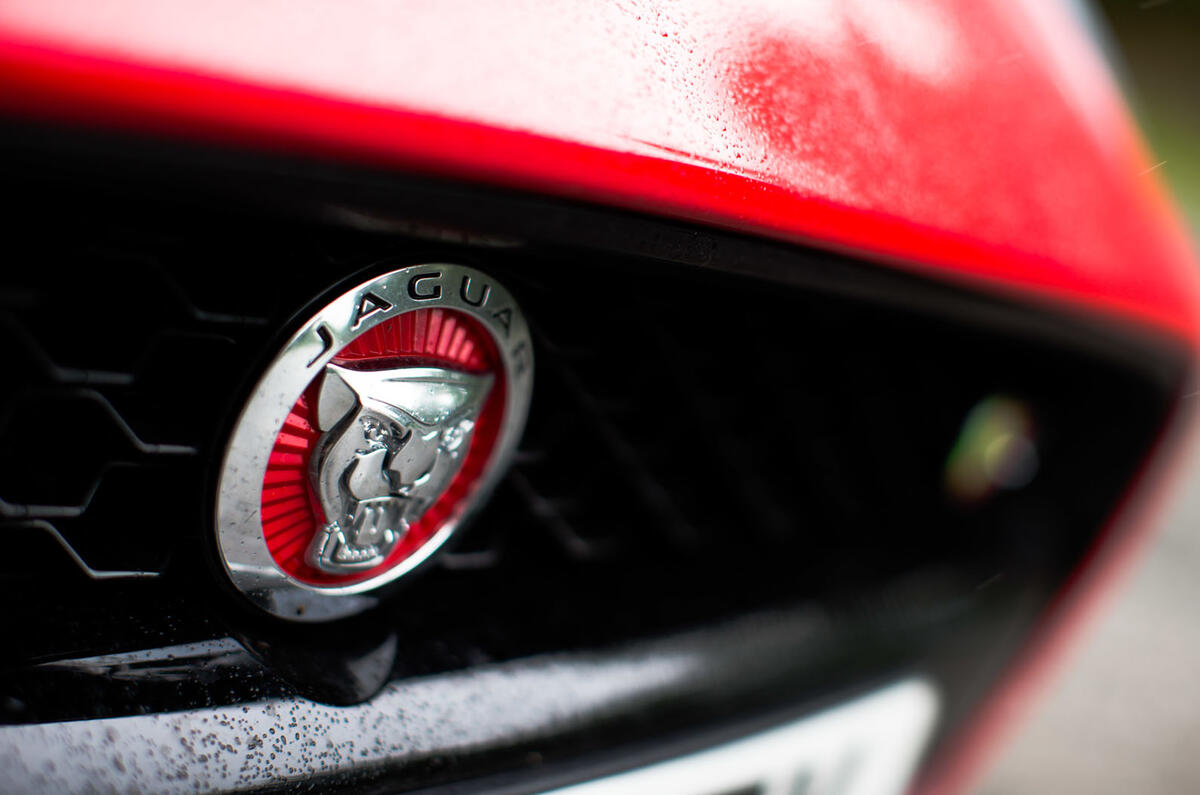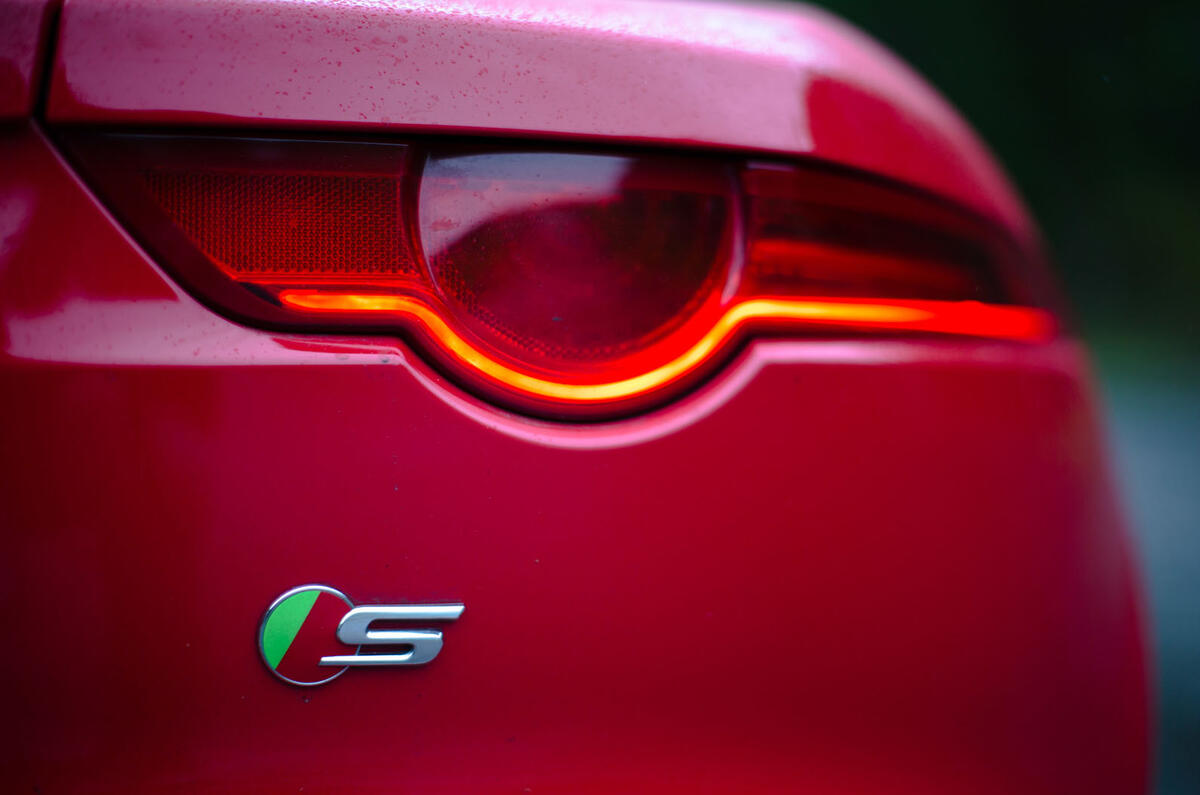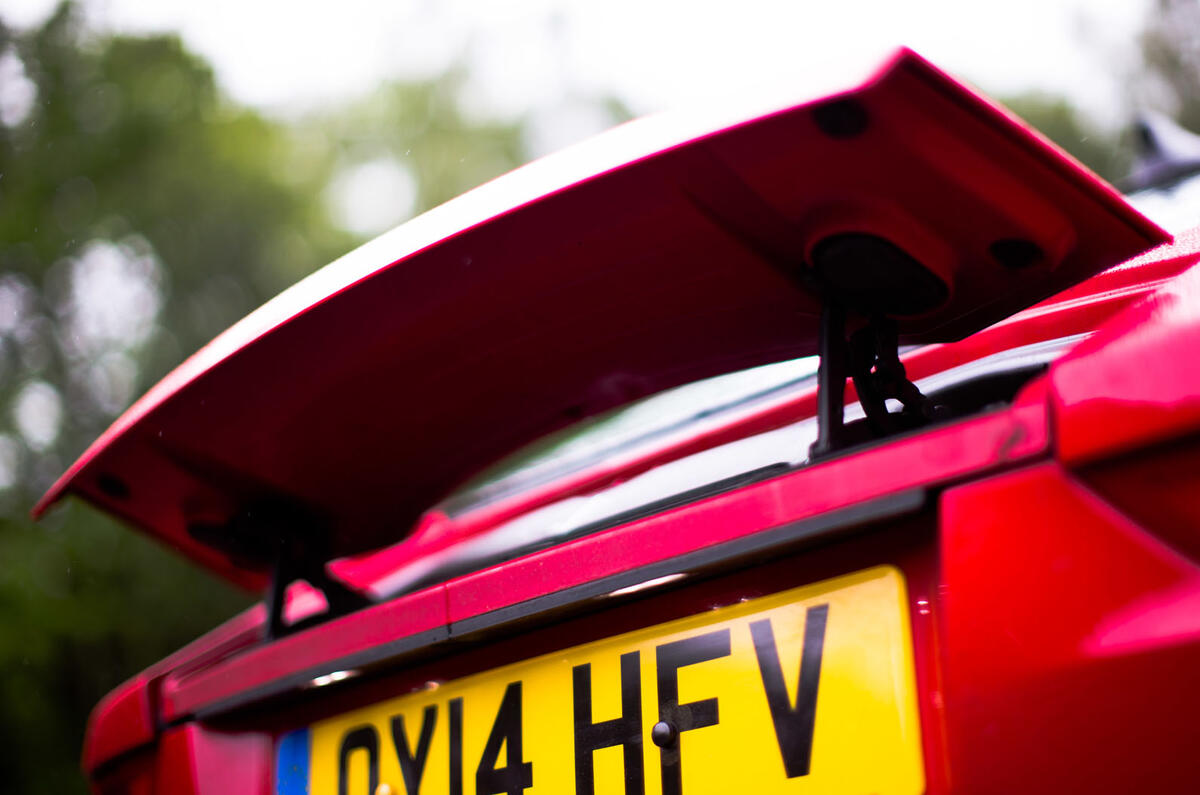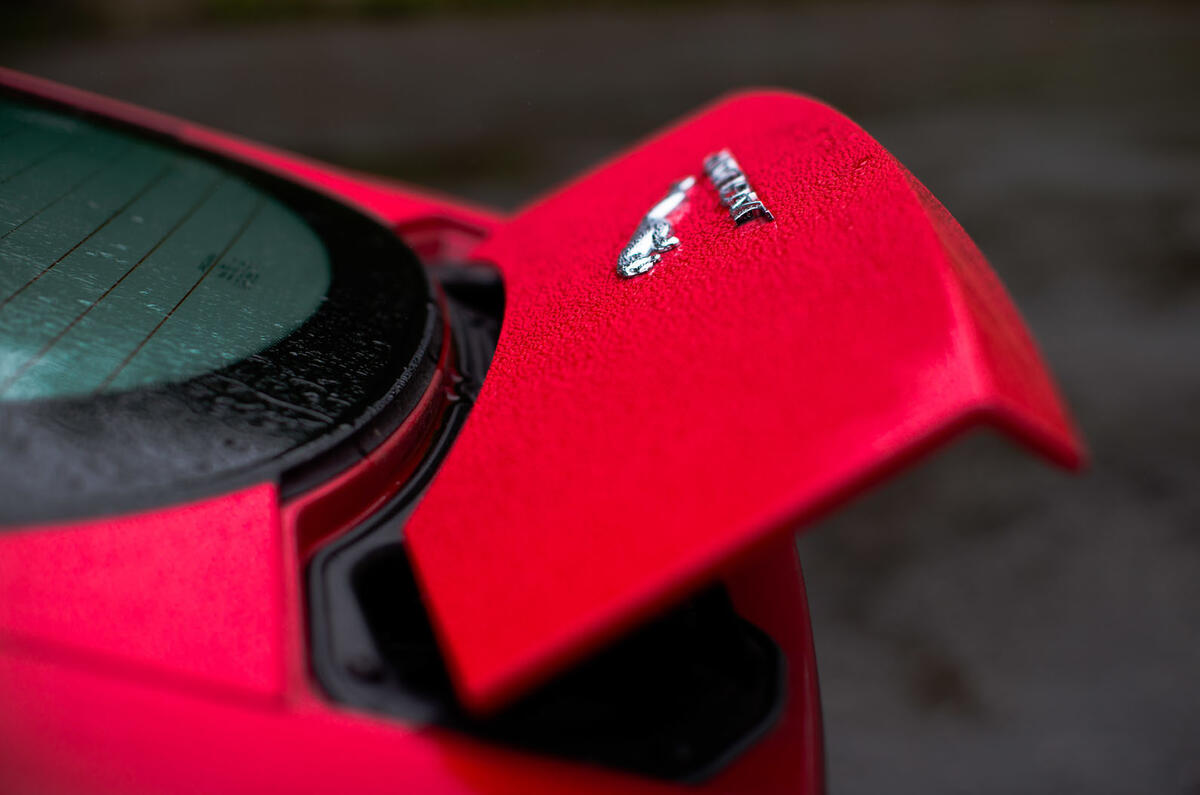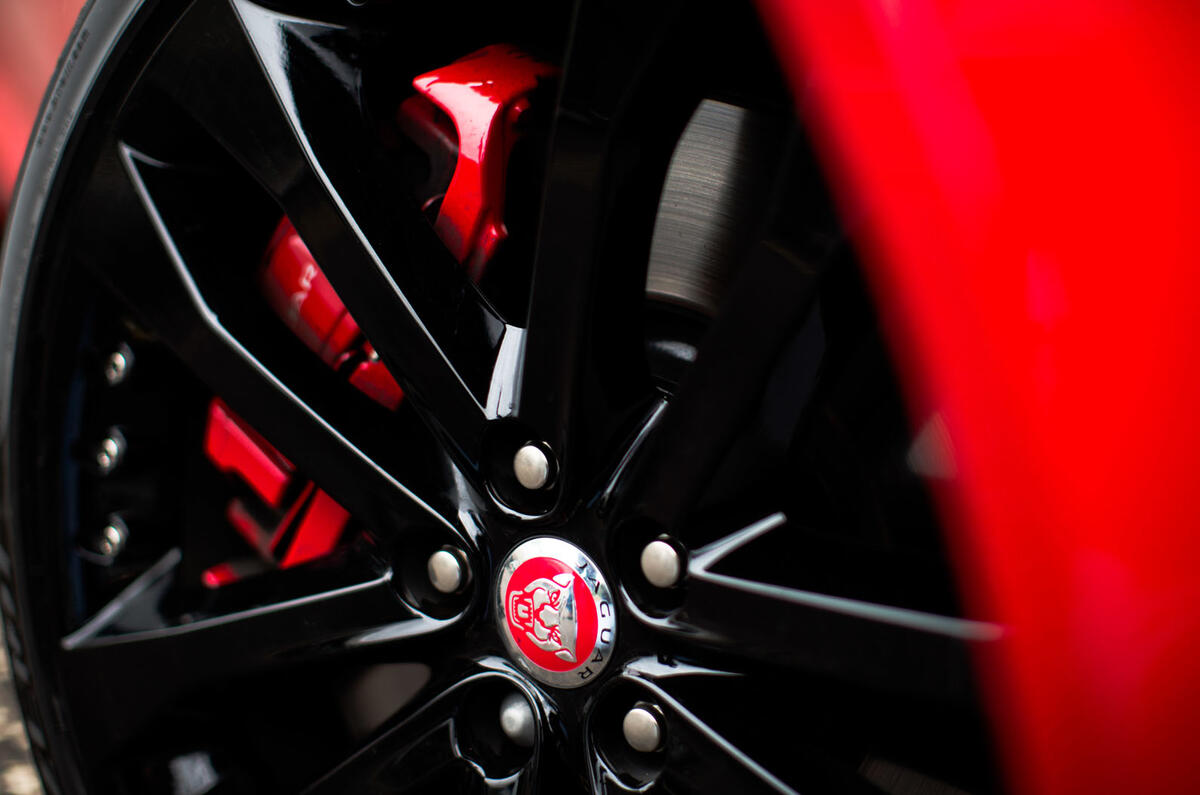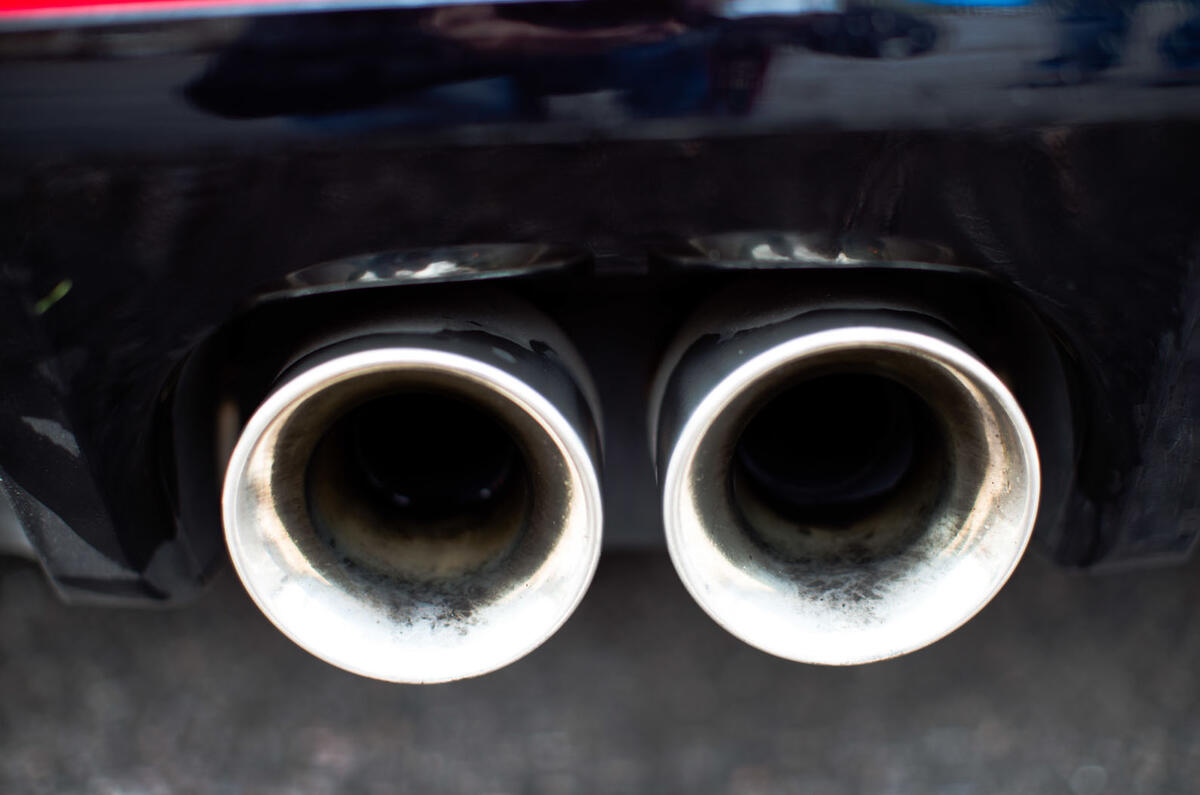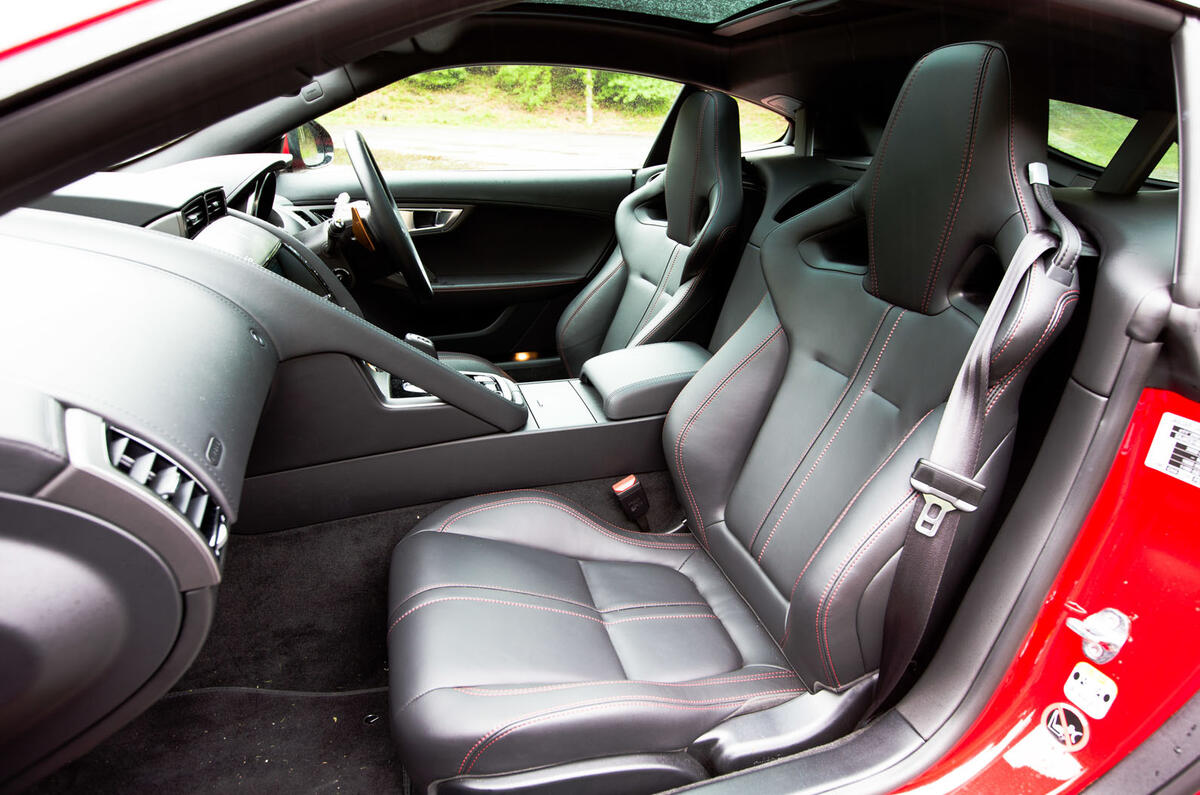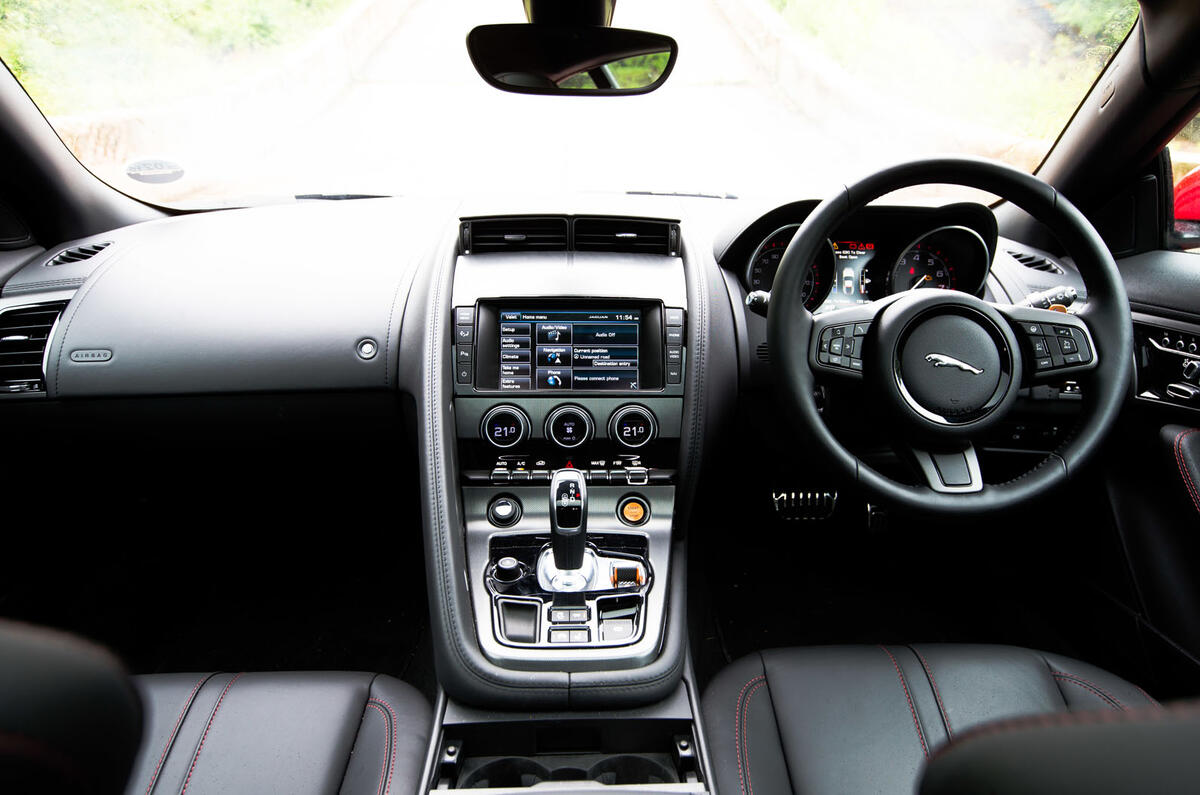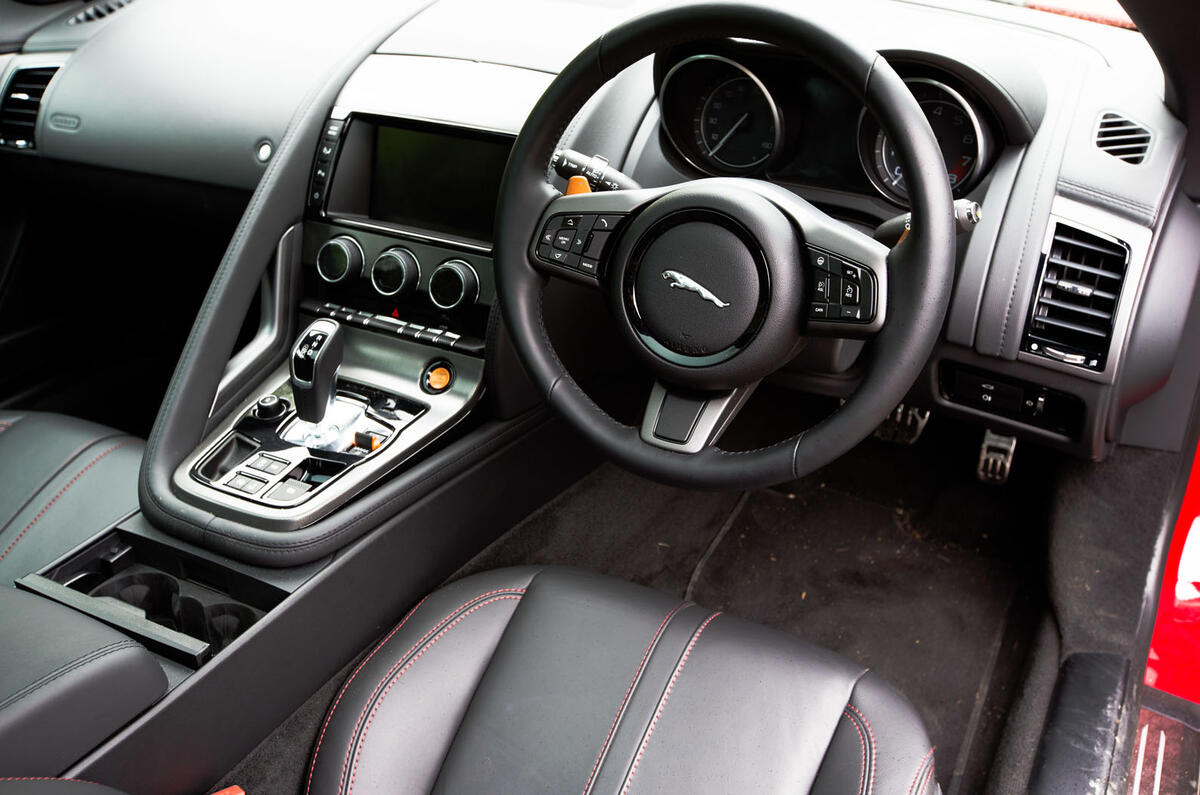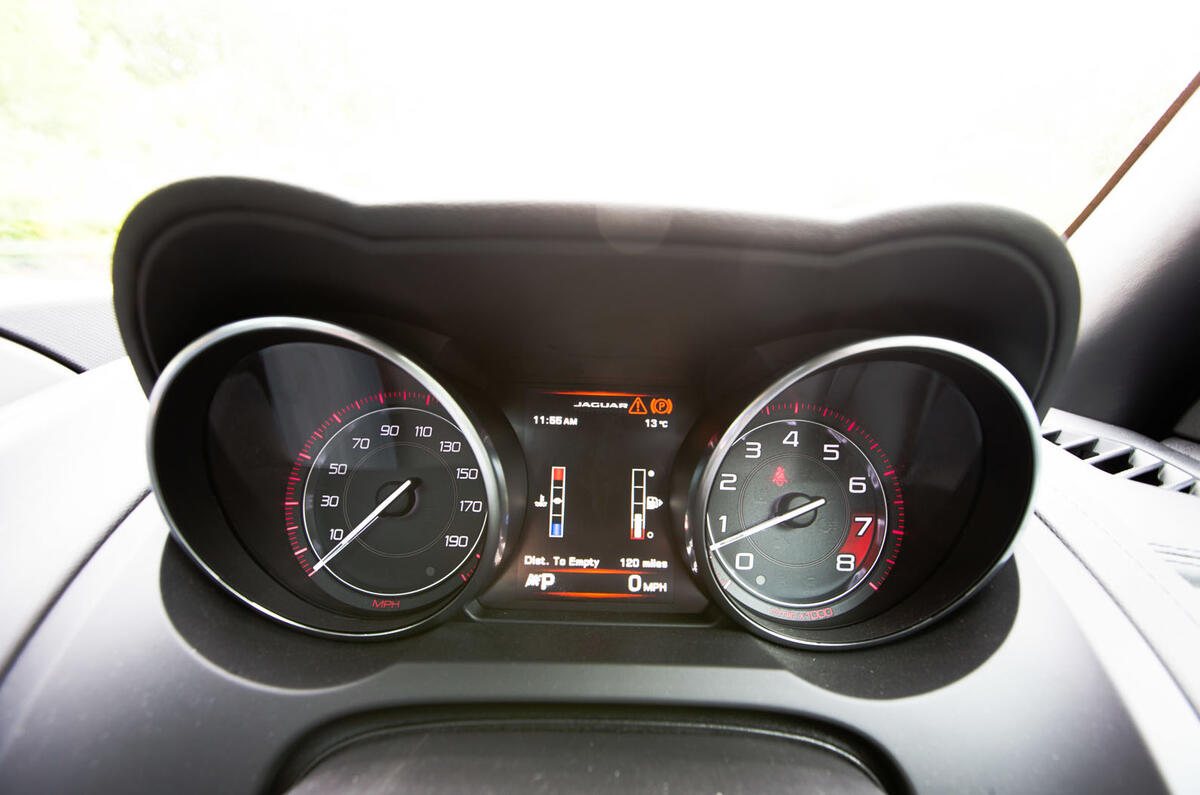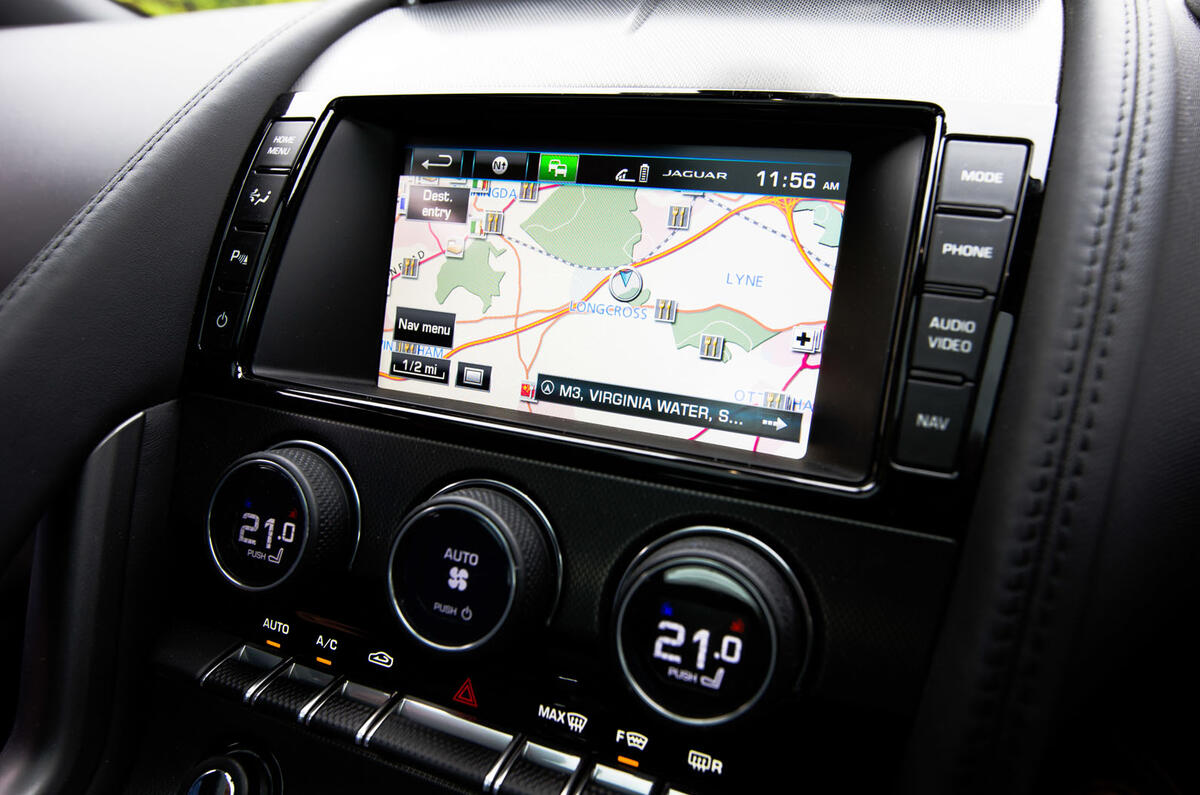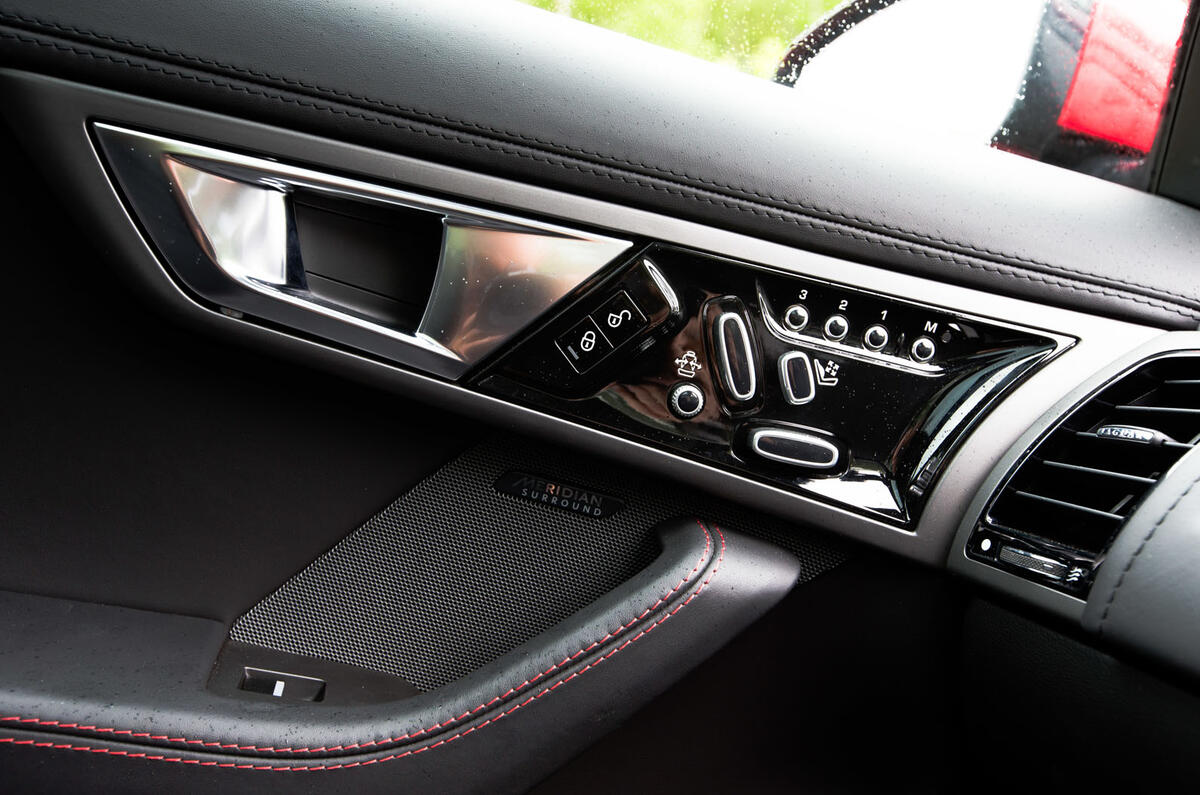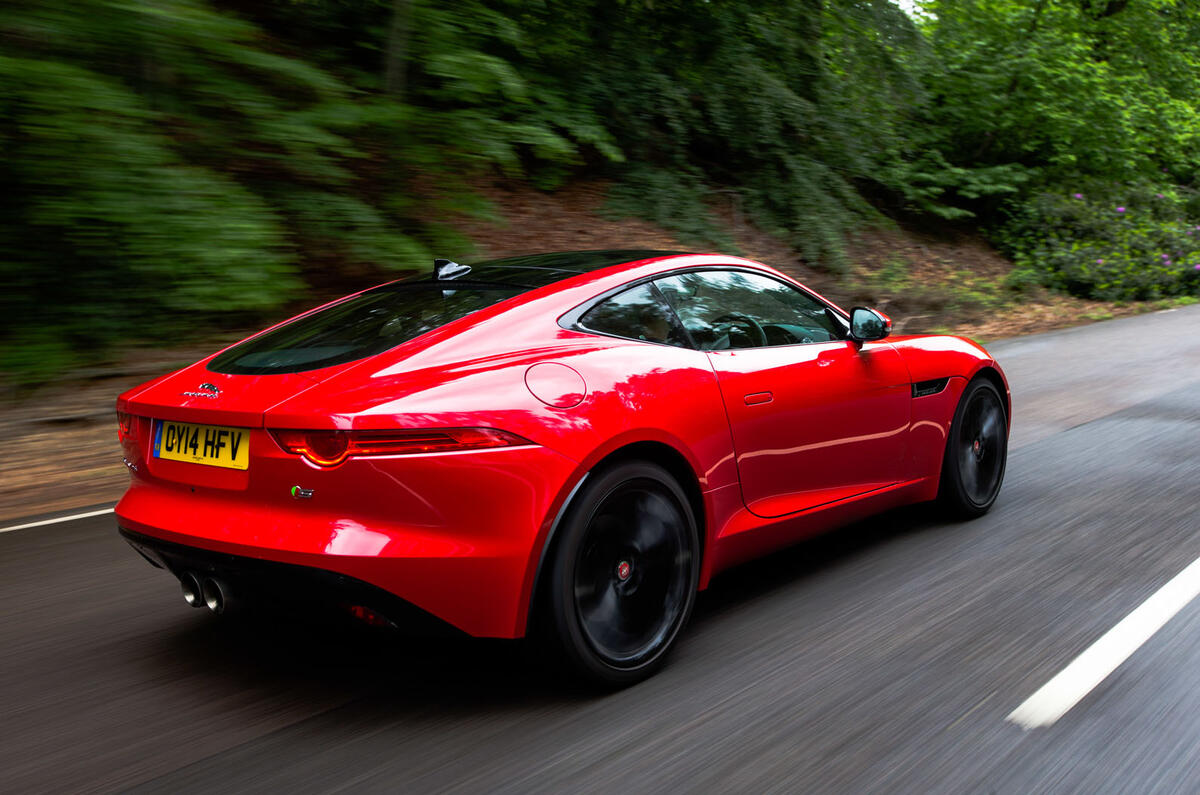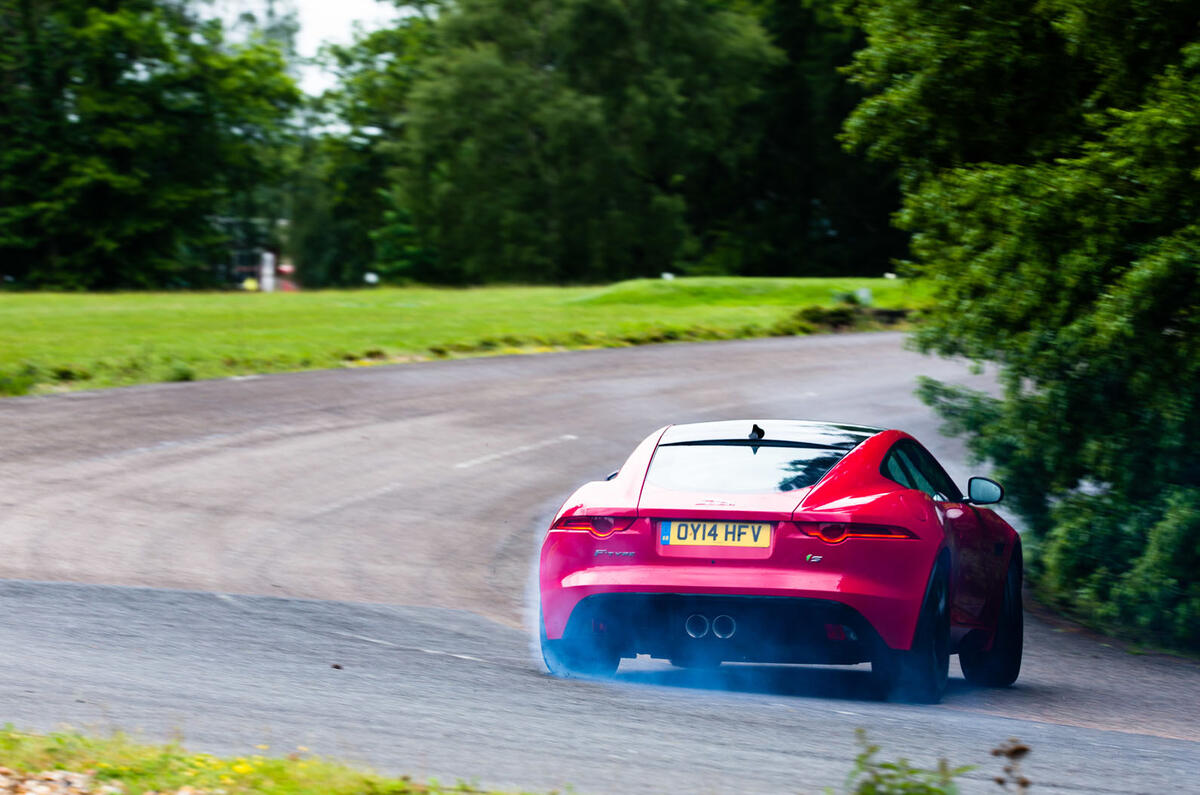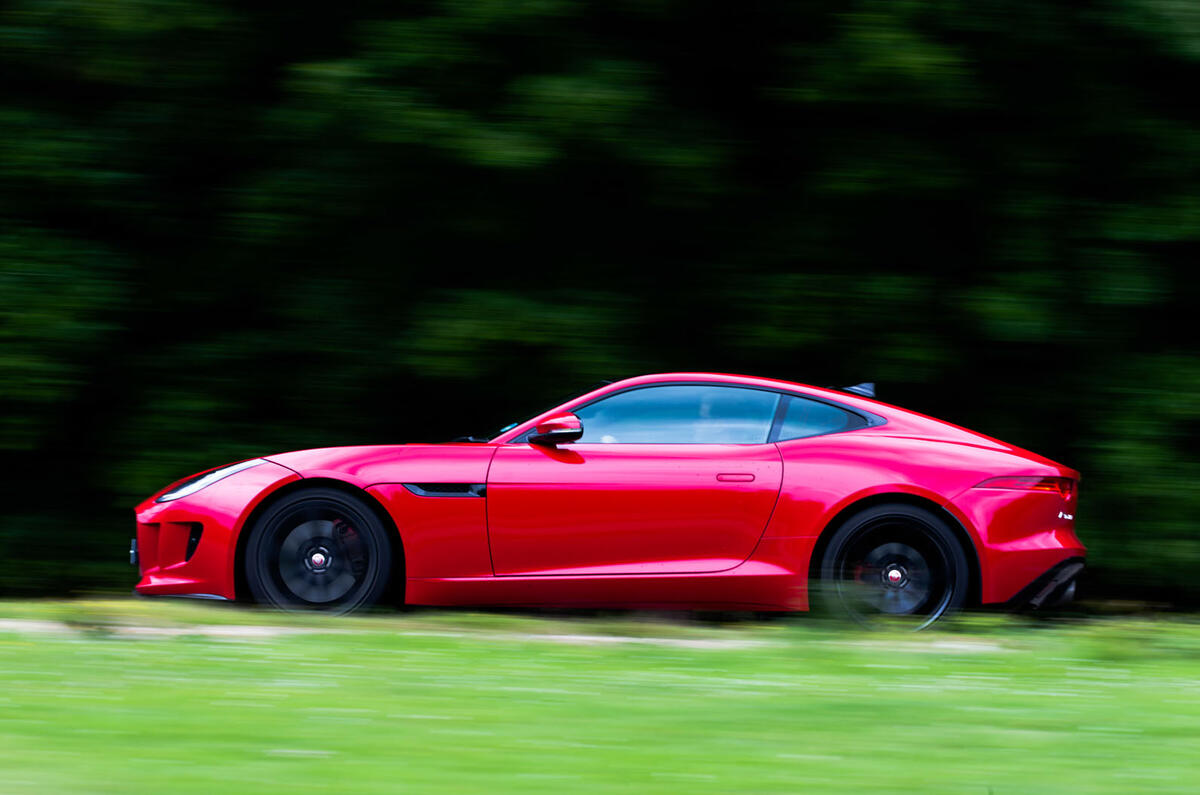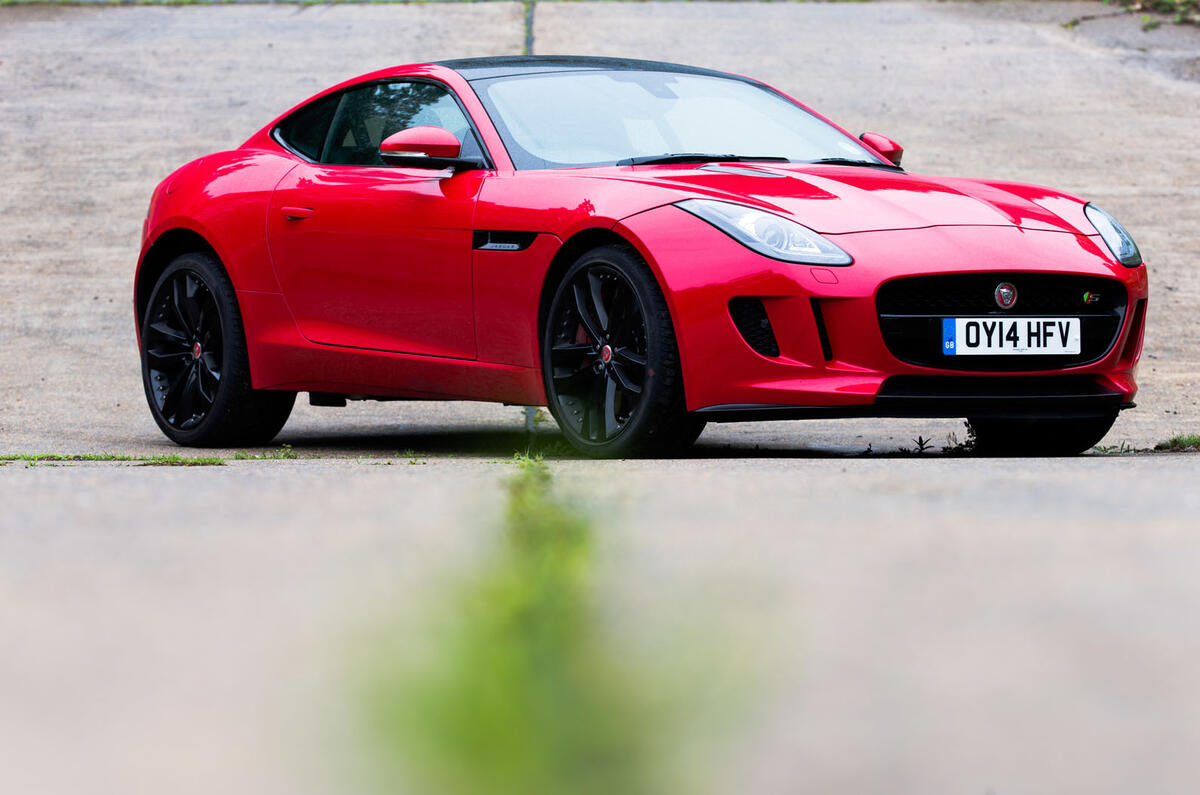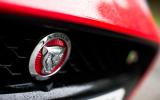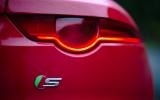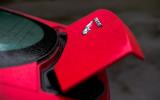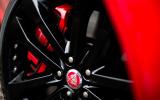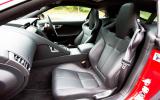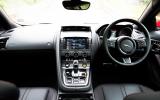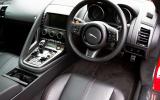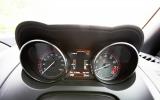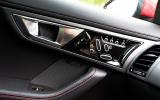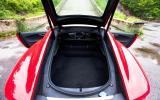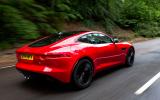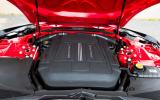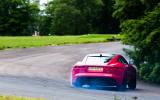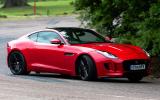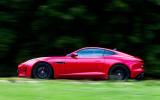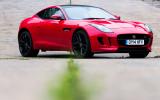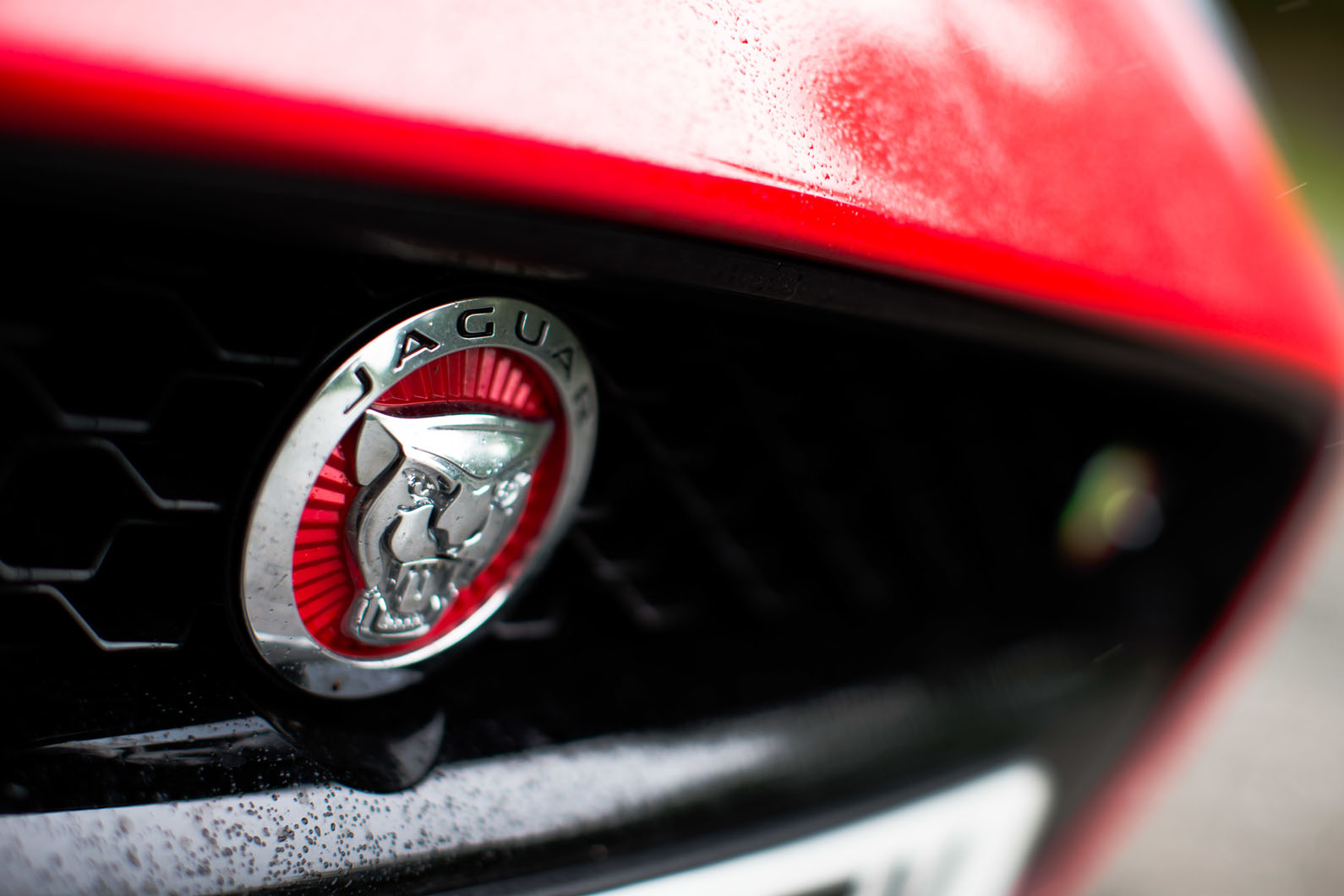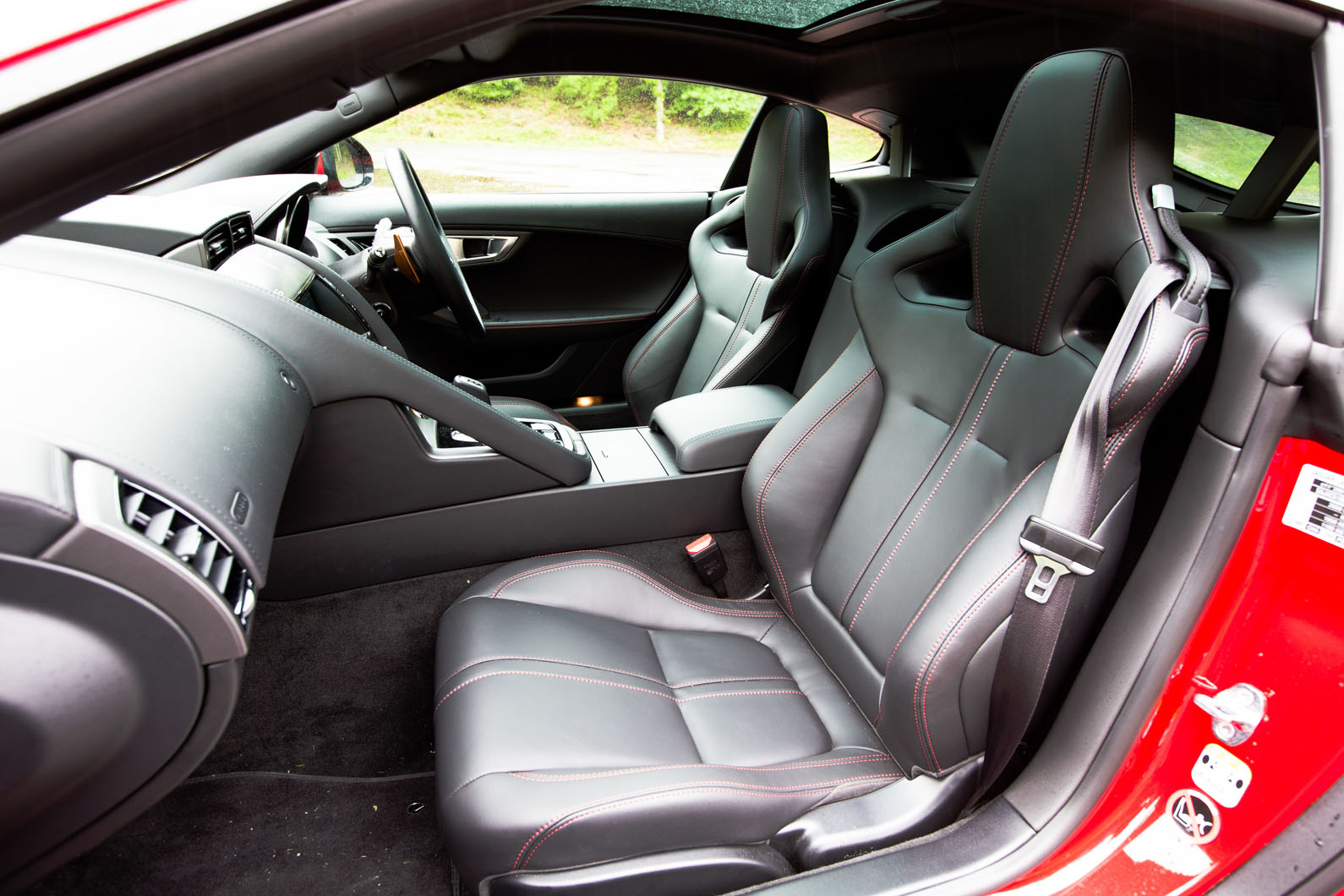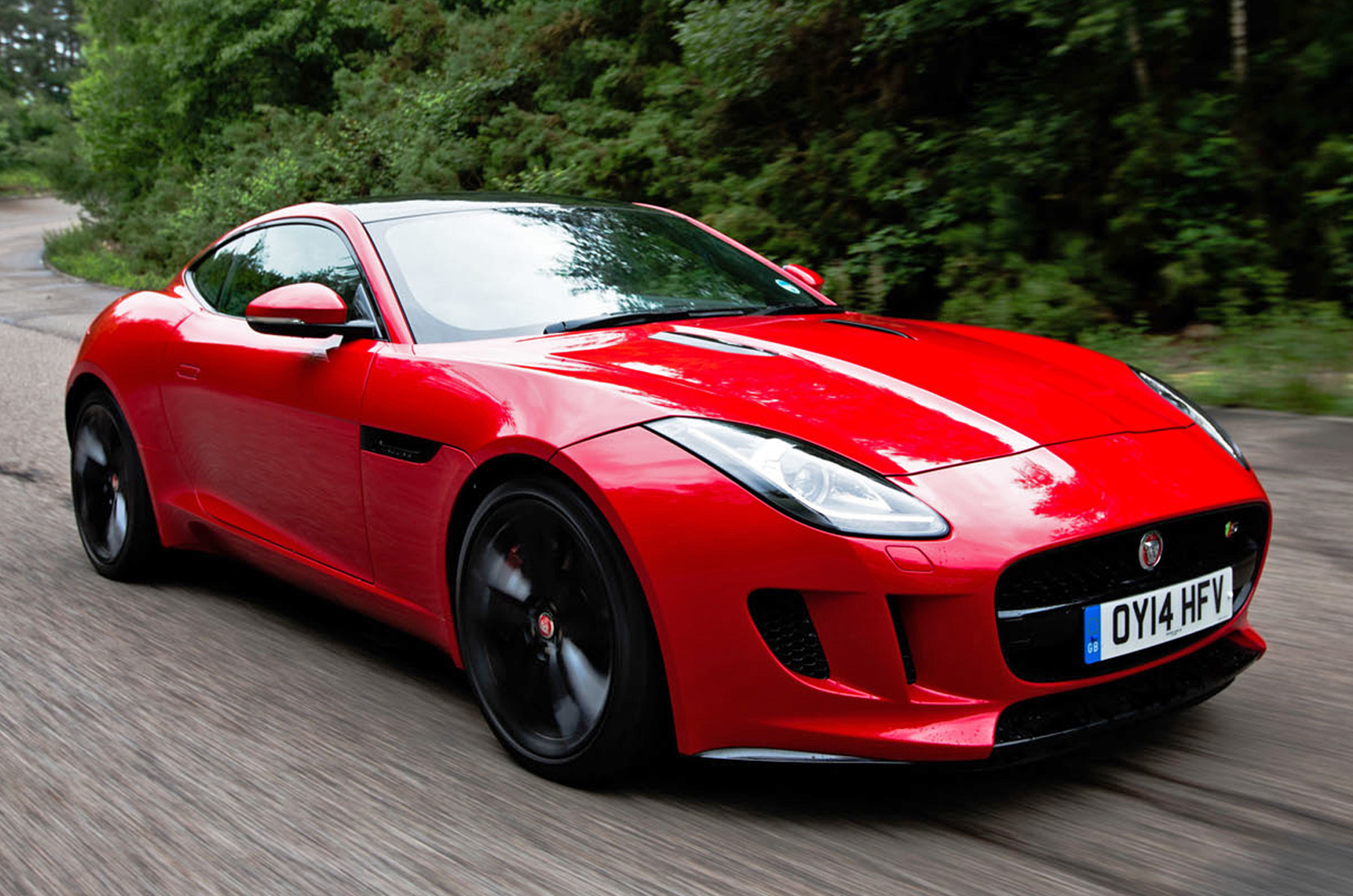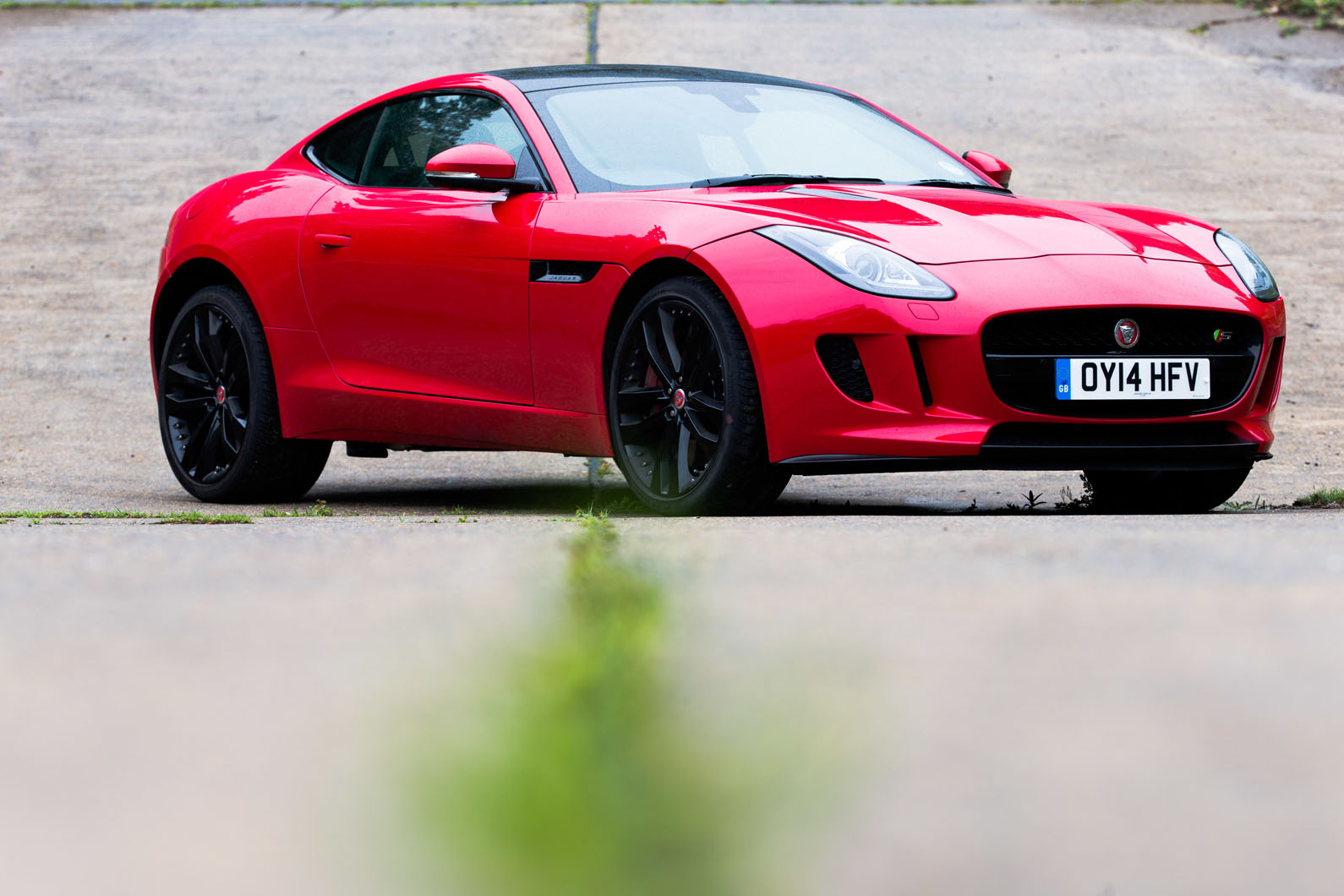You can tell a standard Jaguar F-Type V6 by the simplicity of its lines: twin central exhausts and a simple diffuser at the rear, no black side skirts and no sign of extra badging at the front.
Thumb the starter and the engine blips and settles to an even hum, with no sign of a burble. We’ll get overrun crackles later.
You miss out on the launch control and mechanical limited-slip differential of the Jaguar F-Type V6 S, and don’t get within a prayer of the R’s smart differential or its built-in brake-led torque-vectoring system, which tickles the car’s inside brakes in corners to kill understeer.
What you do get is a 335bhp supercharged V6 engine, an eight-speed gearbox with standard, sports or full manual modes, and normal traction and chassis stability controls, which are variable through a Dynamic mode, as with other Jaguars. Six-speed manuals of the 335bhp and 375bhp V6 F-Types are available but we would stick with the auto 'box.
It feels quick and capable, with a wide performance spread enhanced by the availability of so many gears, something that shows up particularly as you accelerate briskly off the line.
Perhaps because of the engine’s docility and your ease of controlling it, the performance is unthreatening but this car will still pull out a 0-60mph sprint in 5.1sec and top 160mph.
Step up a rung on the ladder and you'll find yourself in the more potent V6 S. It could almost have an inferiority complex, so rambunctious are the noises it can make.
The twin pipes of the V6 S’s standard active sports exhaust can be tempered slightly at the touch of a button, but even when ‘turned down’, the car makes a banshee howl at full throttle and crackles and spits as you back off from high revs.
You’ll probably cringe at times, but you can’t say it’s not a stirring accompaniment to a driving experience of real excitement.
The base engine’s peak torque, delivered between 3500rpm and 5000rpm where you do most of your driving, is only 7lb ft lower than that of the V6 S, rated nearly 40bhp stronger at the 6500rpm power peak, right at the top of the rev range.
This abundance of torque accounts for the fact that the S shaves only 0.3sec from the standard car’s 0-60mph time, and only 0.2sec from its 50-75mph acceleration (3.1sec against 3.3sec), although it does have an extra 10mph of top speed.
Practically speaking, the biggest difference that you’ll notice between the pair is the slightly thinner exhaust note of the cheaper car, which looks the better performance value, especially since it also saves fuel and CO2 emissions.
Would a good manual gearbox make the F-Type more absorbing? Now and again. But you wouldn’t swap the fast-acting eight-speed ZF auto for anything most of the time. It’s flexible and smooth and manages its many ratios very intelligently.
The F’s supercharged 3.0-litre V6 is a big-chested powerplant with a good balance of power and torque – or flat-out urgency and real-world tractability, if you prefer.
But it doesn’t feel so spectacular in a lasting sense and it doesn’t hold your attention or buzz with character like a Porsche flat six or a Mercedes-AMG V8. ‘Loud’ is a slightly poor substitute for ‘lovely’ in that respect.
And, while the F-Type is fast, it’s perhaps not quite as fast as it should be. A launch control mode enabled a V6 S we tested to produce perfect standing starts for our timing gear, yet, because of its mass, it still trails a less powerful and considerably less torquey but 300kg lighter Porsche 911 3.4 to both 60 and 100mph – in the latter case by more than a second. Which surely isn’t quite good enough.
Braking performance is great, though, aided by fine pedal feel and admirable resistance to fade during our track tests.


